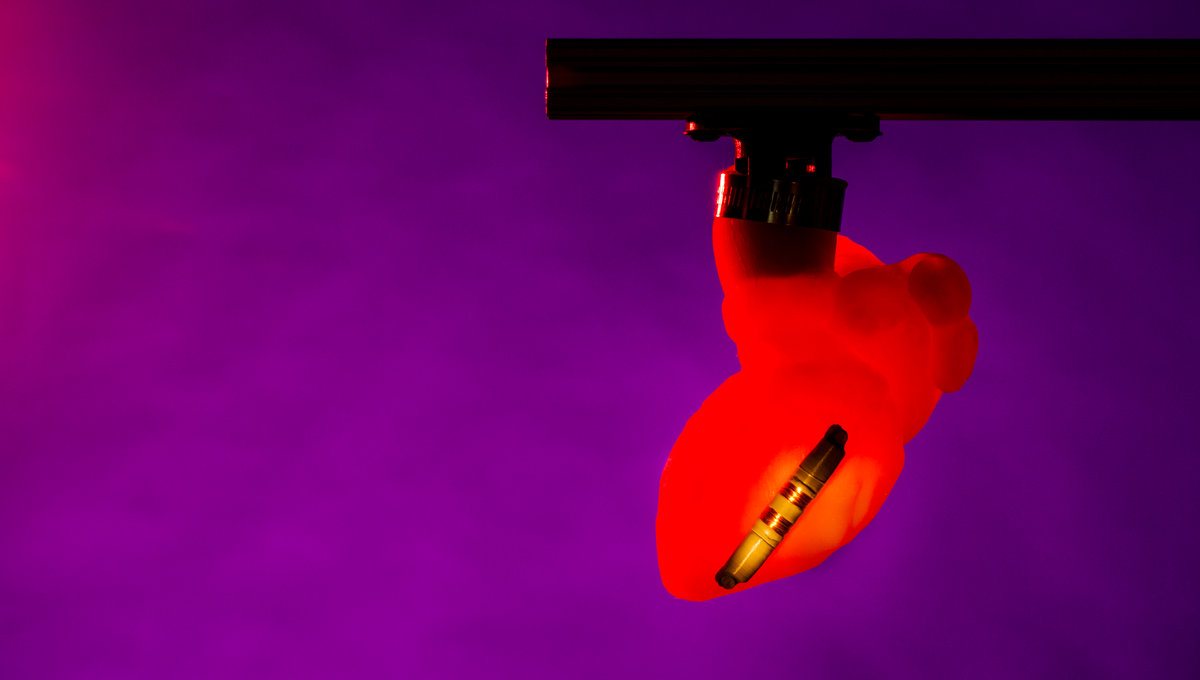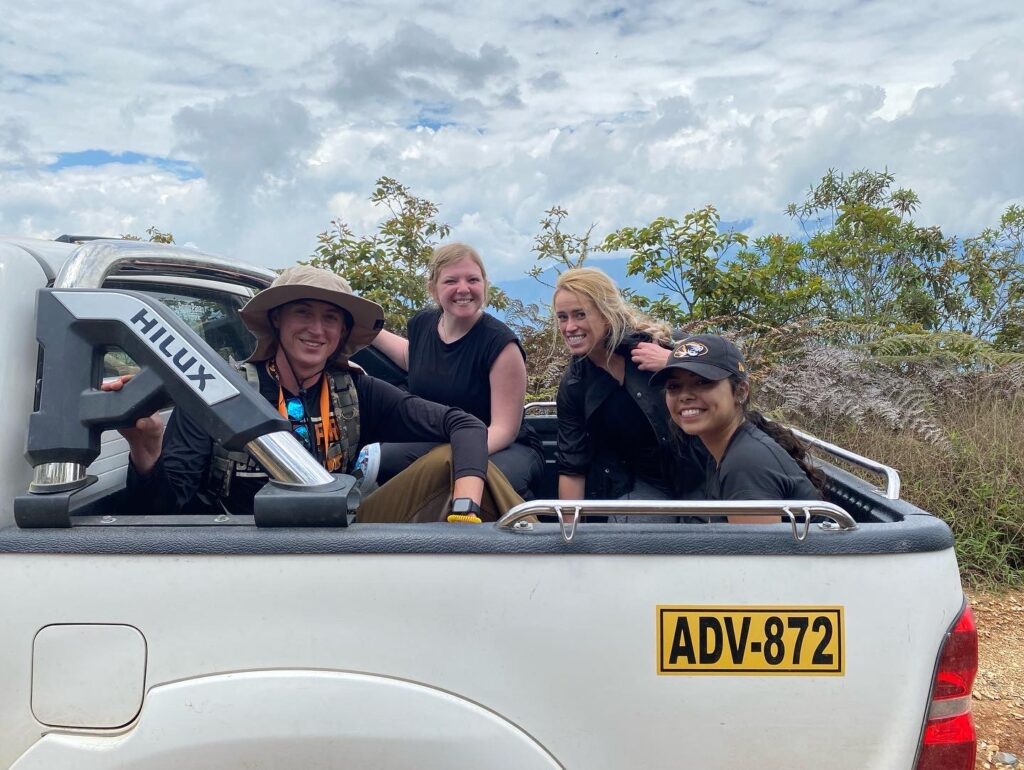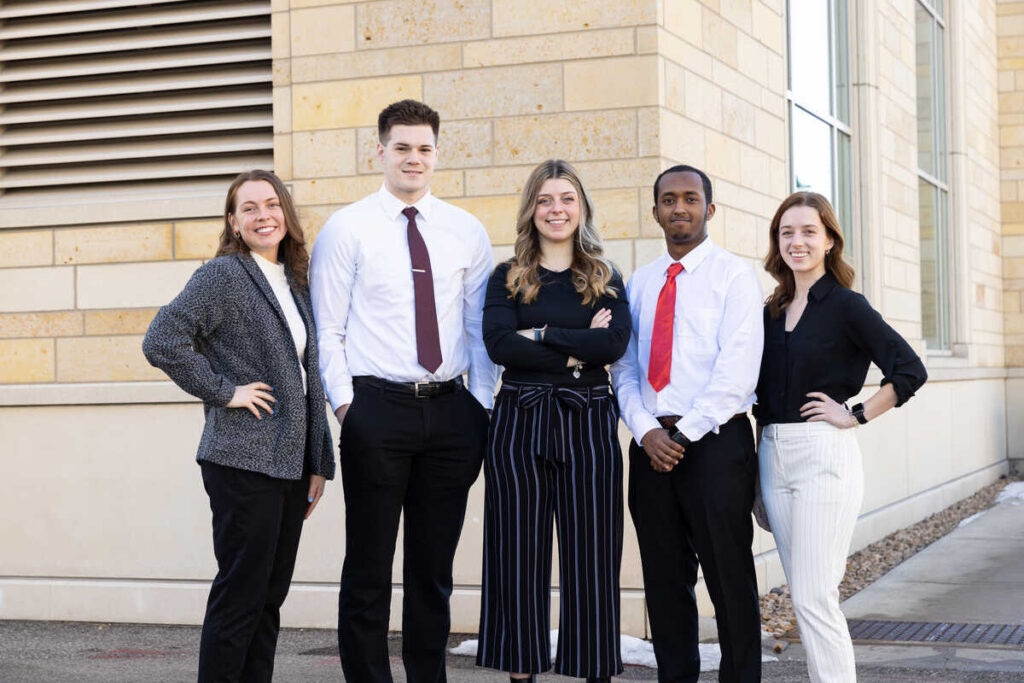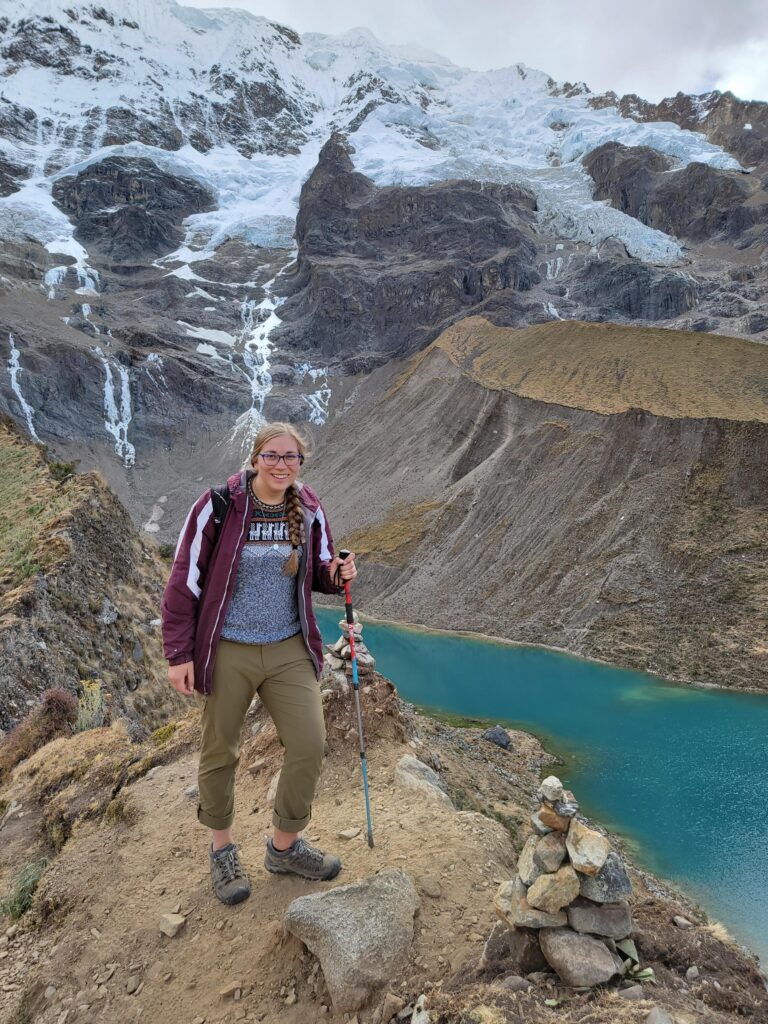St. Thomas offers undergraduate students the opportunity to do research with faculty, to connect personally with professors and to not be “just a number” in the classroom. One of the most common benefits students cite about their St. Thomas education is the ability to connect with faculty members, which supports students’ academic work and personal growth.
In the School of Engineering, faculty collaborate with students at the undergraduate and graduate level. Their research often leads to innovative solutions.
School of Engineering Professor Cheol-Hong Min said that during his two-plus years at St. Thomas, he has seen the immense value of students contributing to ongoing research at the university.
“It’s just a tremendous help,” he said. “They learn the process of how we actually work and do research, and do engineering at companies. We work with the students, guiding them through the whole process. As a result, they become better engineers. As they go out and research different types of products or implementing things, they also bring new information back to us.”
Here is just some of the student research happening at the School of Engineering:

Lindsey Bollig (Mechanical Engineering) poses for a portrait in an engineering lab in the basement of O'Shaughnessy Science Hall on September 29, 2016 in St. Paul.
It’s time for a better transformer
Lindsey Bollig stands by the 3-D printer she created with help from Professor Brittany Nelson-Cheeseman. They are exploring how the unique design capabilities of 3-D printing could lead to more efficient transformers. Higher efficiency transformers would mean less wasted energy in an electrical system.
Read more of their story.
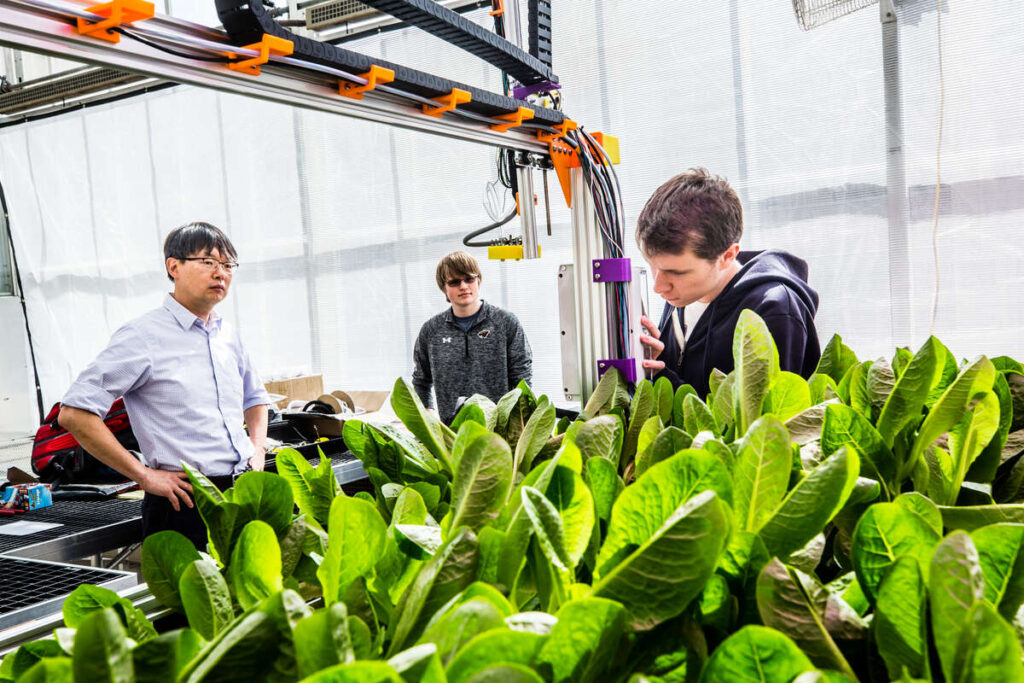
From left, Cheol-Hong Min, School of Engineering faculty, and Peter Farley and Andrew Ryan, both Engineering majors, work on the Farmbot, attached to an arm over a bed of lettuce in the Biology Department Greenhouse in Owens Science Hall, taken on March 16, 2017. The Farmbot is an automated farming robotic tool guided by GPS. The project is a collaboration of several St. Thomas academic departments, including the School of Engineering, Chemistry and Biology.
Farmbot to the rescue
Professor Cheol-Hong Min and computer engineering student Peter Farley watch Andrew Ryan adjust the Farmbot he helped build. Attached to an arm over a bed of lettuce in the Biology Department Greenhouse, the Farmbot is an automated tool guided by a GPS. The project is a collaboration of several St. Thomas academic departments, including engineering, chemistry, biology and graduate software.
Read more of their story.
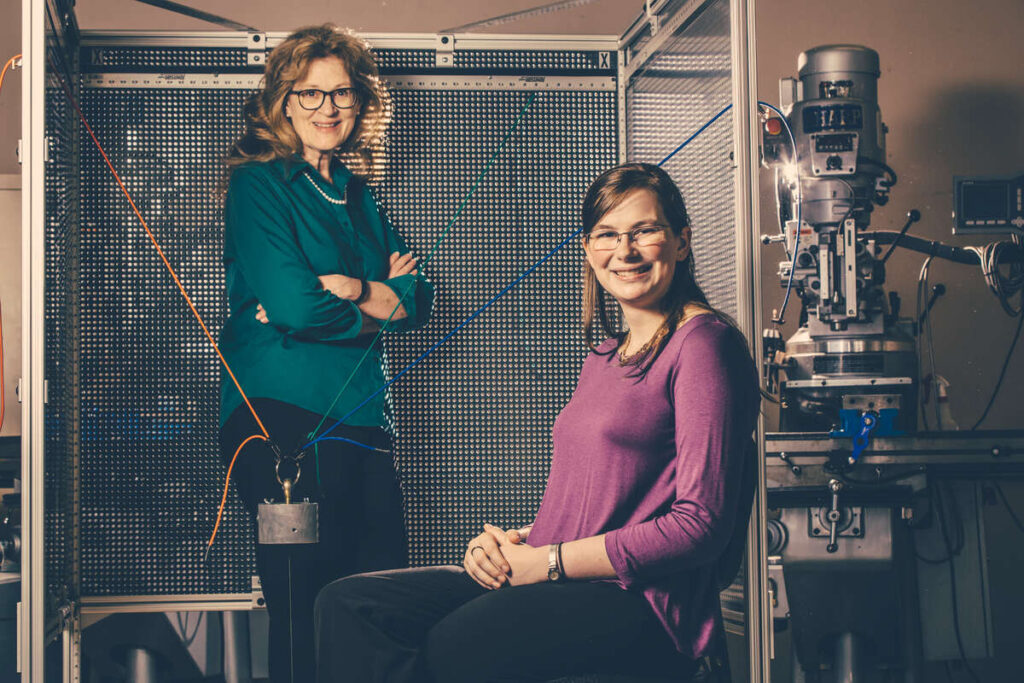
Mechanical Engineering Professor Sarah Baxter, left, and Mechanical Engineering major Anna Schellpfeffer, right, post for a photo in a School of Engineering lab in the lower level of O'Shaughnessy Science Hall on March 30, 2017, in St. Paul.
Fabricating compliant mechanisms
Professor Sarah Baxter, left, and mechanical engineering major Anna Schellpfeffer worked together on fabricating compliant mechanisms using 3-D printing techniques. Schellpfeffer was able to fabricate many designs. She also was funded by a Collaborative Inquiry Grant to investigate a more novel solution to a mathematical model used to predict the configurations of simple frame compliant mechanisms.
Read more of their story.
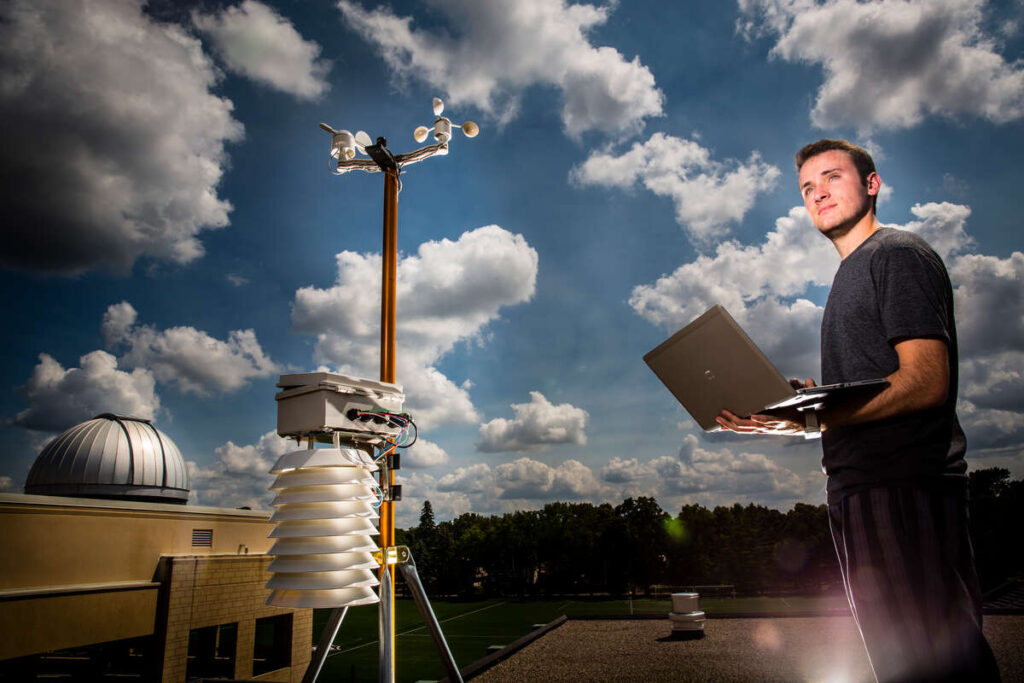
Zachary Emond (electrical Engineering) poses for a photo with the weather station project he is working on with Professor Greg Mowry. Taken on the roof of McCarthy Gym on July 10, 2017 in St. Paul
What’s the weather like today?
Zachary Emond, a mechanical engineering student, stands near the weather station project he is working on with Professor Greg Mowry.
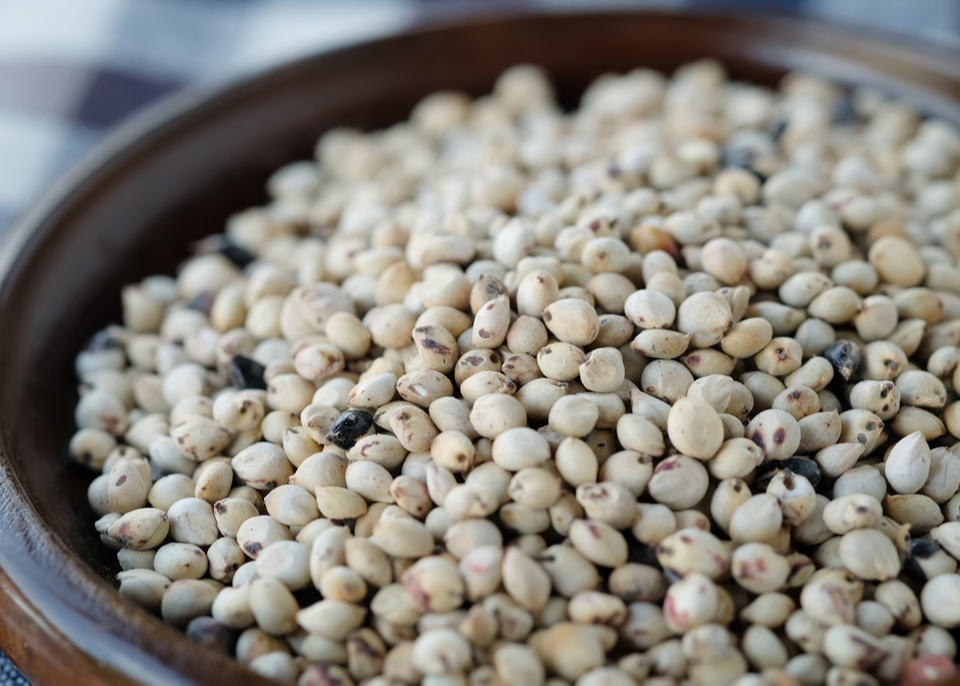
Sticky solutions for sorghum
In Mali, West Africa, turning sorghum sap (see photo) into a sellable syrup is a challenge. Professor Camille George and Professor Greg Mowry have worked with students to find a way to use solar energy to remove water from the syrup to make it usable.
Read more of their story.
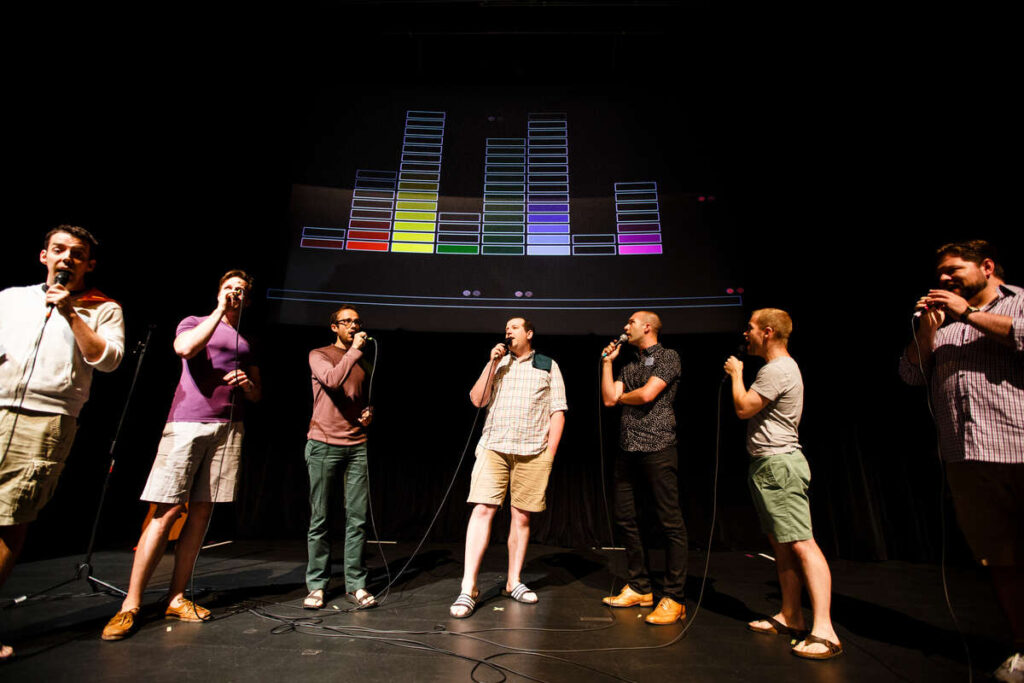
Member of Cantus perform with a projection in the background during a collaborative multimedia performance with the University of St. Thomas Playful Learning Lab and Twin Cities based sining group Cantus at the Science Museum of Minnesota in downtown St. Paul on July 8, 2016.
Can you see what I hear?
Engineering students worked on a project that turns sound into a visual display with their Professor AnnMarie Thomas. Here, the Cantus Vocal Ensemble performs and their vocals are displayed visually above them.
Read more of their story.
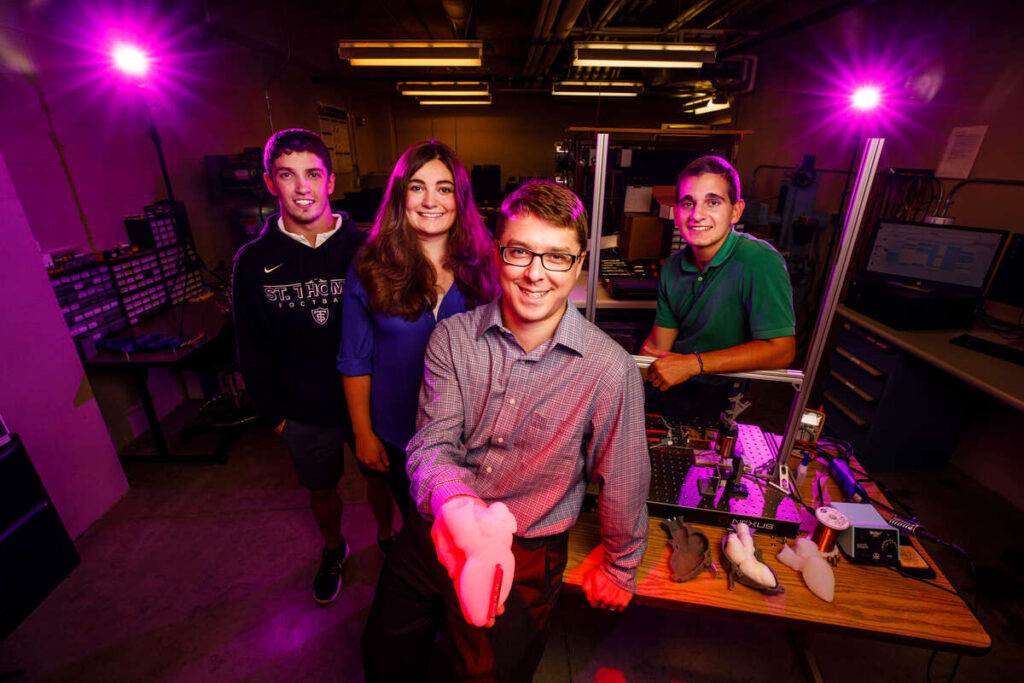
School of Engineering professor Tom Secord (front) poses with his students and their project - a new type of power supply for pacemakers which will not require a battery to be changed - in the basement of Owens Science Hall August 18, 2017. The team is testing the device on an epoxy model of a left ventricle, made from a 3D-printed mold. From left: Austin Lorch, Amanda Tenhoff, Secord and Milad Audi.
Revolutionizing how pacemakers are powered
Professor Tom Secord (front) and his students created an implantable medical device that may replace the need for pacemaker batteries. The team tested the device on an epoxy model of a left ventricle, which Secord is holding, made from a 3D-printed mold. Student researchers are, from the left, Austin Lorch, Amanda Tenhoff and Milad Audi.
Read more of their story.
Read more from St. Thomas Engineer
